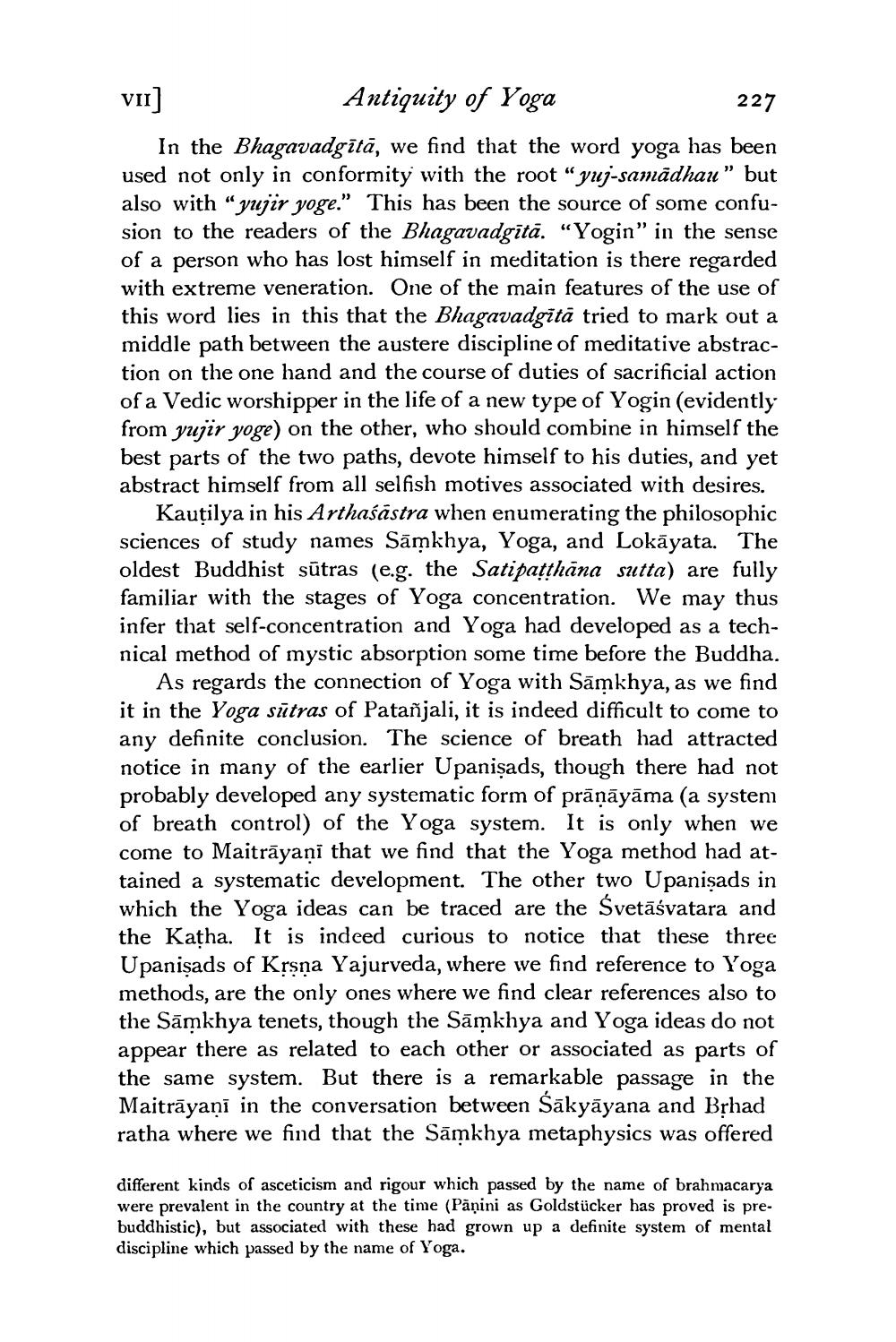________________
VII]
Antiquity of Yoga
227 In the Bhagavadgitā, we find that the word yoga has been used not only in conformity with the root "yuj-samādhau” but also with "yujir yoge." This has been the source of some confusion to the readers of the Bhagavadgitā. "Yogin" in the sense of a person who has lost himself in meditation is there regarded with extreme veneration. One of the main features of the use of this word lies in this that the Bhagavadgitā tried to mark out a middle path between the austere discipline of meditative abstraction on the one hand and the course of duties of sacrificial action of a Vedic worshipper in the life of a new type of Yogin (evidently from yujir yoge) on the other, who should combine in himself the best parts of the two paths, devote himself to his duties, and yet abstract himself from all selfish motives associated with desires.
Kautilya in his Arthaśāstra when enumerating the philosophic sciences of study names Sāmkhya, Yoga, and Lokāyata. The oldest Buddhist sūtras (e.g. the Satipatthāna sutta) are fully familiar with the stages of Yoga concentration. We may thus infer that self-concentration and Yoga had developed as a technical method of mystic absorption some time before the Buddha.
As regards the connection of Yoga with Sāmkhya, as we find it in the Yoga sūtras of Patañjali, it is indeed difficult to come to any definite conclusion. The science of breath had attracted notice in many of the earlier Upanişads, though there had not probably developed any systematic form of prāņāyāma (a system of breath control of the Yoga system. It is only when we come to Maitrāyani that we find that the Yoga method had attained a systematic development. The other two Upanişads in which the Yoga ideas can be traced are the Svetāśvatara and the Katha. It is indeed curious to notice that these three Upanisads of Krsna Yajurveda, where we find reference to Yoga methods, are the only ones where we find clear references also to the Sāmkhya tenets, though the Sāmkhya and Yoga ideas do not appear there as related to each other or associated as parts of the same system. But there is a remarkable passage in the Maitrāyani in the conversation between Sākyāyana and Brhad ratha where we find that the Sāmkhya metaphysics was offered
different kinds of asceticism and rigour which passed by the name of brahmacarya were prevalent in the country at the time (Pāṇini as Goldstücker has proved is prebuddhistic), but associated with these had grown up a definite system of mental discipline which passed by the name of Yoga.




